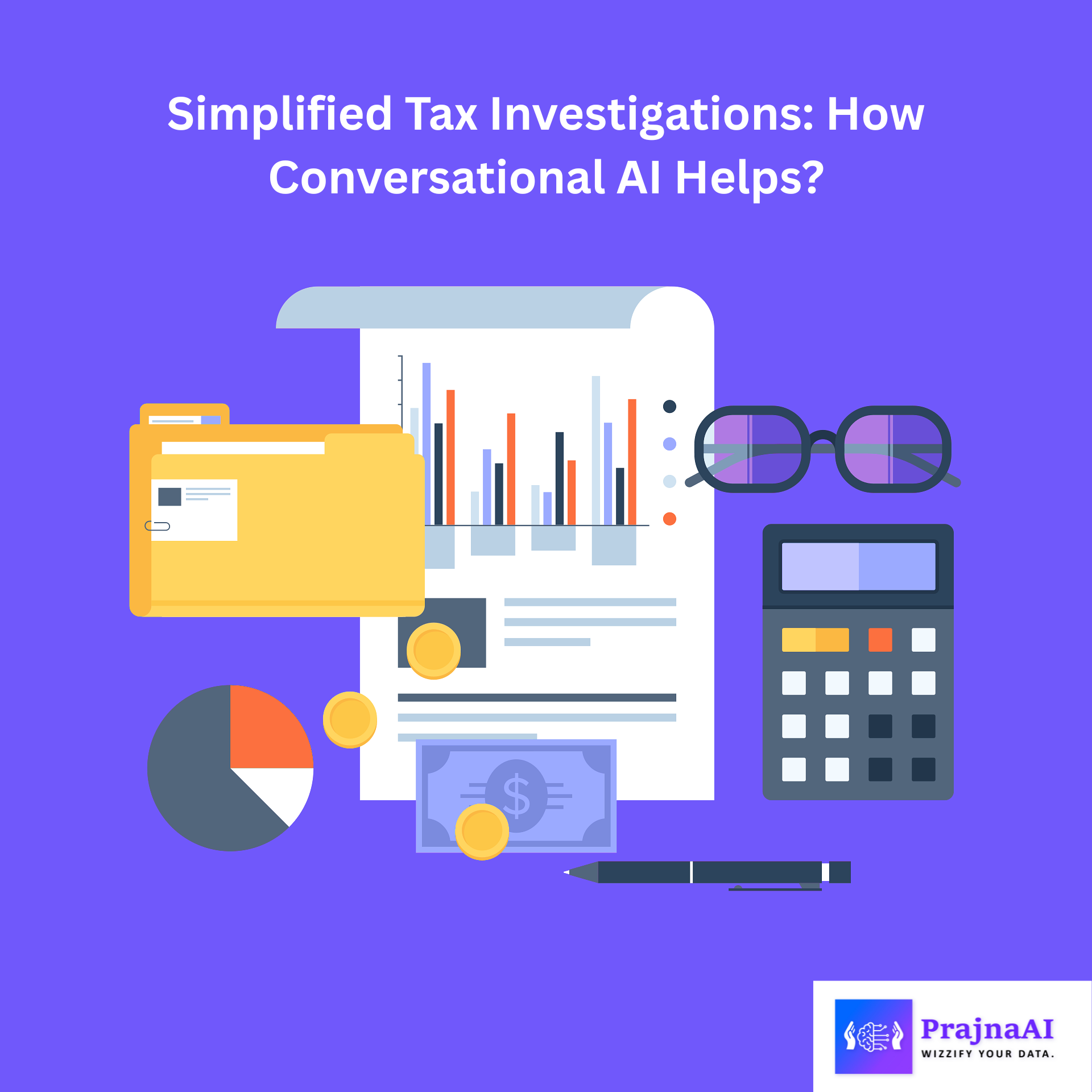Conversational AI is quietly reshaping tax audits. By pairing a large-language model with an IRS-trained knowledge graph and a lightning-fast vector database, investigators can ask plain-English questions (“Who paid the most tax in 2022?”) and receive sourced, traceable answers in seconds. The result: shorter cases, cleaner trails, and higher confidence for both taxpayers and examiners.
Tax investigations are stressful by nature. Deadlines loom, penalties mount, and every missing document can feel like a ticking clock. Add rising caseloads and shrinking budgets, and it is no surprise the IRS is looking to technology for relief. In 2024 the agency’s Strategic Operating Plan singled out artificial-intelligence tools as “fundamental” to its next-generation compliance programs.
Those tools are arriving fast. A May 2025 audit report confirmed that AI-based case-selection already helps examiners zero in on high-risk returns.
But while AI can flag returns, investigators still need to dig through thousands of forms to build a narrative. That manual slog is the bottleneck this article tackles.
Investigations: high stakes, high pressure
An examiner may juggle dozens of open cases. Each one demands answers to basic yet time-consuming questions: Which income types did this filer report last year? Where did that loss originate? Meanwhile, corporate audits can stretch five years and cost both sides a fortune in staff time.Automation helps, yet traditional rule-based software struggles with unstructured data, attachments, and correspondence. Investigators end up hopping between spreadsheets, PDFs, and legacy databases—hardly a recipe for speed or accuracy.
What if you could ask your data questions — in English?
Imagine typing, “Show all Schedule C filers claiming crypto losses over $50 k in 2023,” and seeing an instant list, complete with citations back to the exact lines on each return. That is the promise of natural-language tax queries. The commercial tax-prep world already hints at it; TurboTax and H&R Block embed chat assistants that explain deductions in plain speech.
What auditors need, however, is a secure version tuned for investigative depth. Enter Conversational Tax Intelligence.
Enter Conversational Tax Intelligence
Chatbot trained on IRS forms, income types, filing patterns
Our prototype AI chatbot for IRS data ingests the text of every major form, schedule, and instruction booklet. It also learns common filing patterns: wage income on W-2s, capital gains on 1099-B, partnership flow-throughs on K-1s. Training on labeled examples—plus public research like the PLAT benchmark for LLM tax reasoning—sharpens its domain skill while containing hallucinations.
Integrated with the knowledge graph (GrasPh)
Data by itself is messy. That is why the chatbot sits on top of GrasPh, an expanded version of the IRS Compliance Data Warehouse Knowledge Graph environment. The graph links entities—taxpayers, employers, forms, line items—into an easy-to-traverse web. Such hybrids of language models and knowledge graphs, sometimes called GraphRAG, have become a best practice for enterprise AI.
Real use cases
1. “What income types did Danielle Johnson report in 2023?”
Output: “Wages ($87,300, Form W-2, Box 1); Dividend income ($1,240, Form 1099-DIV, Box 1a); Freelance revenue ($12,450, Schedule C, Line 1). Source tabs show PDFs of each form.”
2. “Who had the highest total tax paid in 2022?”
Output: “Taxpayer ID •••-12-3456 paid $48.6 million (Form 1040, Line 24). Top-Entities tab lists the next nine filers.”
Firms already using AI agents for client advisory work report 20–30 % faster file reviews. Investigators can expect similar gains once these capabilities move behind the firewall.
How it works
| Step | Description |
|---|---|
| 1 — Query | Examiner types or speaks a natural-language question. |
| 2 — LLM | The language model rewrites the question into structured calls. |
| 3 — Graph + Vector DB | Grabs entities from GrasPh and retrieves relevant document chunks via a vector database, the engine behind retrieval-augmented generation. |
| 4 — Answer + Source | The model drafts a short answer plus links back to every cited form. |
Behind the scenes, the chatbot keeps context windows short by storing embeddings, not entire PDFs, boosting speed and lowering cloud costs.
Tabs: Source, Top Entities, Similarity Chunks
Results appear in three tidy tabs:
-
Source – direct links to images of the quoted lines (essential for courtroom defensibility).
-
Top Entities – a summarized list of the people, companies, and forms mentioned.
-
Similarity Chunks – nearby text so investigators can judge nuance without opening a new window.
Providing evidence up front satisfies the transparency recommendations laid out by watchdogs and the Office of Management and Budget for any federal AI system.
Speed + Accuracy = Confidence
Cut investigation time
Early pilots show that common look-ups drop from thirty minutes to under two. Chatbots never sleep, removing the weekend lag that frontline staff lament.
Reliable traceability
Every answer carries a breadcrumb trail back to the original filing, meeting the audit-trail standards highlighted by Taxfyle and other compliance experts. Transparency also calms fears that AI will “black-box” important decisions—a concern raised by academics and the Washington Post’s review of federal AI expansion.
Combined, speed and traceability raise examiner confidence and reduce taxpayer anxiety. Shorter cases mean fewer interest charges and quicker refunds when errors favor filers.
The Final Thought
A conversation is now your most powerful audit tool. By merging a plain-English interface with a purpose-built knowledge graph and vector search, Conversational AI for tax data demystifies complex returns and slashes investigation timelines. For auditors, that means fewer late nights with dusty binders. For taxpayers, it means clearer answers and fairer outcomes. And for innovators, it is a shining example of how responsible AI—grounded in sources, not gueswork—can modernize even the most labyrinthine corner of government.
Ready to modernize your tax investigations?
Talk with the Prajna AI team about your specific challenges, and let us design a conversational-AI solution that fits.

